US Air Force Flies B-52 Bombers Over Mideast In Sync With Allies

Two US B-52H Stratofortress bombers flew over the Middle East , in a multilateral drill with partner air forces in the region, CENTCOM announced on Thursday.

Two US B-52H Stratofortress bombers flew over the Middle East , in a multilateral drill with partner air forces in the region, CENTCOM announced on Thursday.
“This Bomber Task Force mission demonstrates our commitment to regional security and the collective capabilities of our military partners in the region,” CENTCOM commander Gen. Michael “Erik” Kurilla said. “CENTCOM has the ability to very quickly put a significant amount of combat power in the air alongside our partners.
A press release by CETCOM did not specify the exact date and time of the bomber mission.
The US Air Force periodically sends B-52 bombers to fly over the region both as a show of force and resolve, as well as a coordinating exercise with air forces of partner nations, such as Israel and some Arab states.
However, the latest drill was the first of what CENTCOM called "multilateral use of Transverse," a program that "enhances partner nations' operational situational awareness."
“This Bomber Task Force is a clear reflection of enduring U.S. commitment to the region,” said Lt. Gen. Alexus Grynkewich, Ninth Air Force (Air Forces Central) commander. “Together with our partners, we can rapidly inject overwhelming combat power into our common operating area.
The bombers came from the 2nd Bomb Wing at Barksdale Air Force Base, Louisiana and integrated their mission with 13 partner nation air forces.
CENTCOM also said that Gen. Kurilla held one-on-one discussions on "matters of mutual importance" with top military leaders of partner nations in the region, Bahrain, Egypt, Israel, Kuwait, Lebanon, Oman, Qatar, Saudi Arabia, the United Arab Emirates and Yemen.

Outgoing Defense Minister Benny Gantz has trumpeted the prospect of an Israeli military attack on Iran’s expanding nuclear facilities.
Gantz told a press briefing Wednesday that Israel had prepared “long-term processes I don’t want to elaborate on.” Gantz claimed the last time Israel was so ready for striking Iran was when he was chief of staff in 2012 and then prime minister Benjamin Netanyahu rejected the option.
With Netanyahu set to return to office after November 1 parliamentary elections, Gantz said he expected Likud leaders would now “act with judgment.” The outgoing government led by Naftali Bennett and Yair Lapid has since taking office in June 2021 argued Netanyahu had left Israel ill-prepared for an attack on Iran.
Israel’s leaders have all criticized efforts to revive the 2015 Iran nuclear agreement, which restricted Tehran’s atomic program until the United States abandoned it in 2018. A series of killings in Iran of nuclear scientists and explosions at atomic facilities have been widely attributed to Israel.
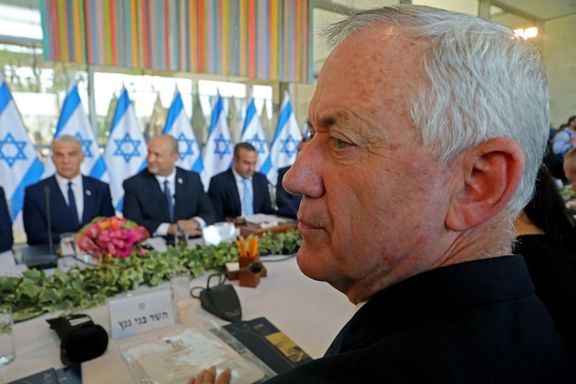
Israel was responsible, the Wall Street Journal reported Wednesday, for air strikes near Abu Kamal, Deir Ezzor province, eastern Syria, Tuesday/Wednesday night targeting a convoy suspected of carrying Iranian weapons. At least 14 people were killed, according to the Syrian Observatory for Human Rights.
Iraqi officials and Iranian media have said the tanker convoy was carrying fuel sent by Iran to Lebanon, a long journey. The Journal cited an Iraqi border official that Iran sends one or two convoys a month to help with Lebanon’s chronic power shortages and that Tuesday morning, a convoy of 22 vehicles had been in the Iraqi border town of al-Qaim, waiting to cross.
‘Trucks loaded with weapons and oil..’
Since retaken 2017 by the Syrian army with Russian air support from the Islamic State (ISIS) group, Abu Kamal, also known as Al-Bokamal and 4km from the Iraqi border, has been a shipment hub used by Iraqi militia allied to Iran. The border crossing to Al-Qaim, in Anbar province, reopened 2019.
Iranian state television attributed Tuesday night’s attack to a United States drone. The Syrian Observatory for Human rights (SOHR) said US aircraft had been flying low in the vicinity, but a spokesman for the US military said its forces had not been involved.
SOHR said aircraft had hit “trucks loaded with weapons and oil tanks of Iranian-backed militias in the customs square in Al-Hari and the military gate in Al-Bokamal countryside,” and a separate “military site of Iranian-backed militias near the area.”
SOHR said of at least 14 dead, most were “Iranian-backed militiamen,” and that due to serious injuries the toll was likely to rise. Israel had carried out frequent air strikes in Syria it says have disrupted arms supplies to the Lebanese group Hezbollah. SOHR reported Thursday heightened security among Hezbollah fighters near the Syrian border town of Dimas, Rif Dimashq governorate, south-west Syria adjoining Lebanon.
Violence in Syria continued this week with Russian jets striking caves and dens held by Isis fighters in Al-Rusafah desert, Al-Raqqah governorate. SOHR reported Thursday Syrian army firing rockets in the ‘Putin-Erdogan area,” the supposedly de-escalated region from the Latakia mountains to Aleppo’s suburbs, while Turkish and Kurdish forces traded shellfire in Aleppo governorate.

Grand Ayatollah Ali Sistani has dismissed comments attributed to him regarding Iran's protests, saying he does not have a “representative to express his opinion on political issues.”
After the recent statements of Javad Shahrestani, Ayatollah Sistani’s son-in-law, who claimed the nationwide protests in Iran “are not popular at all,” in a short statement on Wednesday the Grand Ayatollah stated that “any political stance” by him will be communicated through his office.
Javad Shahrestani, who introduces himself as the representative of Sistani, had called the Iranian protesters “a bunch of rioters,” saying “it is not clear where they came from and what kind of enemy they are guided by.”
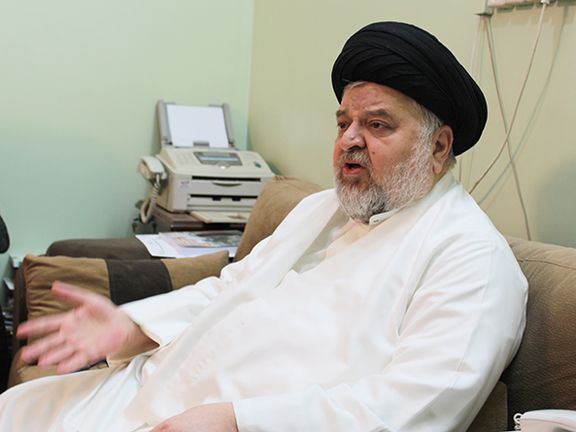
These statements are made in a situation that the Iranian state media and insiders repeatedly call the protesters "garbage", "lewd", "jaunty", "flies", "thugs" and "ISIS" in their speeches against the great movement of Iranian people.
In its latest, the commander of the Army's Ground Forces called the demonstrators "flies" in his speech on Wednesday.
In the past four decades, Iran's government has always called popular protests "riots" and by using the term "enemy", it has accused the West, especially the United States and Britain of leading these protests.
Ayatollah Sistani rarely comments on current political issues. However, Moqtada al-Sadr, another influential Shia figure in Iraq, has expressed concern that opposition to the mandatory hijab in Iran may spread to other countries in the region.
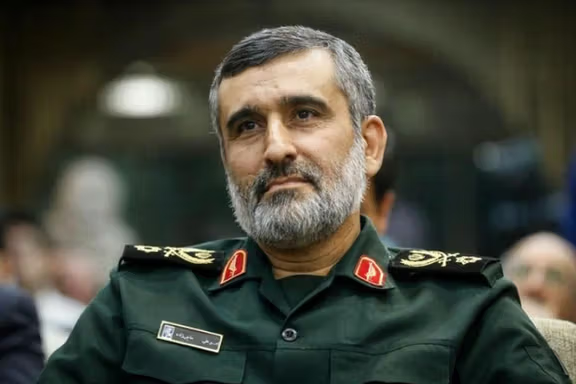
Iran has built a hypersonic ballistic missile, the Revolutionary Guard’s aerospace commander claimed Thursday, in remarks likely to heighten concerns about Iran’s missile program.
"This missile has a high speed and can maneuver in and out of the atmosphere. It will target the enemy's advanced anti-missile systems and is a big generational leap in the field of missiles," commander Amir-Ali Hajizadeh was quoted as saying.
Hypersonic missiles can fly at least five times faster than the speed of sound and on a complex trajectory, which makes them difficult to intercept. So far, only Russia, Iran's close military ally, has developed such weapons.
However, there have been no reports of such a missile being tested by Iran and, while the Islamic Republic has developed a large domestic arms industry in the face of international sanctions and embargoes, Western military analysts say Iran sometimes exaggerates its weapons capabilities.
Concerns about Iran's ballistic missiles did however contribute to a US decision in 2018 under then-President Donald Trump to pull out of the nuclear pact that Tehran signed with world powers on 2015.
Last week, Iran said it tested the Ghaem 100, its first three-stage space launch vehicle, which would be able to place satellites weighing 80 kg (180 pounds) in an orbit 500 km (300 miles) from the earth's surface, according to state media.
The United States has called such actions "destabilizing" as it believes space launch vehicles could be used to transport a nuclear warhead.
With reporting by Reuters

Russia’s use of military drones in Ukraine has highlighted the ready availability of the low-cost weapons and their growing use in conflicts.
Quebec-based Bombardier Recreational Products (BRP) has expressed surprise that engines made by Rotax, its Austrian subsidiary, were reportedly found in Iranian-made drones shot down in Ukraine. The company’s logo has featured in photographs of drone wreckage.
BRP spokeswoman Biliana Necheva said in a statement November 4 that the company had not supplied engines to Iran since 2019 and that “none will be sold moving forward.” She suggested that Iran might have used counterfeit engines or stolen them.
After a Rotax engine was apparently found in a Mohajar-6 drone shot down by Ukrainian forces and displayed on CNN in October, BRP stated October 21 it had not given authorization to distributors to “supply military UAV manufacturers in Iran or Russia.”
But United States-funded Radio Free Europe has reported that Mahtabal, Iranian distributor for Rotax engines, was advertising sales and a repairs service as recently as December 2020. RFE said one camera in the shot-down Mohajar-6 was produced by Hong Kong-based RunCam Technology, which has two authorized Iranian dealers. Another camera resembled a model produced by Sierra-Olympic Technologies, based in the US state of Oregon, or a cheaper Chinese version, while microchips featured the logos of the California-based Linear Technology Corporation.
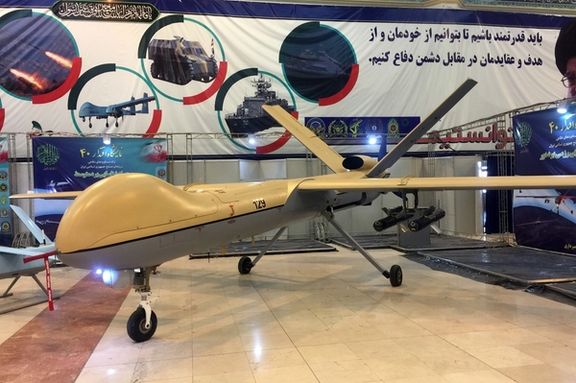
‘Countries with unclear usage’
While Rotax engines are used in snowmobiles, watercraft and civilian airlines, they also figure in the United States MQ-1 Predator drone, Israel’s Heron drones, and some Russian drones. Drone output has surged in the Middle East in recent years, with the main producers Israel and Turkey.
In 2020, it emerged that Rotax engines were being used in Turkish Bayraktar TB2 drones being used by Azerbaijani forces against Armenia – which led the company to say it would stop exports of Rotax 912 engines to “countries with unclear usage.” The manufacturer has claimed Ukraine’s use of the Bayraktar would boost worldwide sales.
Iran has developed a program of drones, or UAVs (unmanned aerial vehicles), given it lacks an effective air force due to international sanctions. While Iranian officials and commanders have celebrated this as an achievement of domestic production, Iran has copied when advantageous.
Iran’s Shahed-129 drone, in production since 2013, has been widely reported to have a Rotax 914 engine. A decade ago, there were reports that had Iran copied aspects of a US drone it had shot down.

Tehran has developed skills in obtaining technology when barred by sanctions. “Exporters will look at the request coming from the [United Arab Emirates] or another third country…when really the end user is in Iran,” Daniel Salisbury, a senior research fellow with the Department of War Studies at King’s College London, recently told RFE.
Cost-effective alternative
While Ukraine has in the current conflict used both Turkish and US drones, as well as making its own, Russian military commanders have generally been skeptical over the usefulness of drones.
Russia’s Forpost, a surveillance drone that is a licensed version of the Israeli IAI Searcher II, has been deployed in Ukraine, but Moscow has faced problems with its stealth drones. Ukraine has argued that Iranian drones are a cost-effective alternative to missiles while Kyiv has also used Tehran’s supply to lobby successfully for better US air defenses.
After conceding Saturday that it had supplied drones to Russia, albeit before the current phase of conflict and specifically for use in Ukraine, Iran continues to stress both its links with Moscow and desire for a negotiated peace.
After meeting with Russian Security Council Secretary Nikolai Patrushev in Tehran Wednesday, Iran’s top security official Ali Shamkhani called for deeper ties in energy, transport and banking. He said they had discussed resisting “western interference” in internal affairs and that Iran would back “any initiative that leads to a ceasefire.”

Iran’s intelligence minister has implicitly threatened the UK of terrorist operations after the country decried attempted menacing acts against two London-based Iran International journalists.
In an interview with the official website of the Supreme Leader, published on Wednesday, Esmail Khatib said the Islamic Republic recognizes Iran International as “a terrorist organization,” adding that its workers and anyone affiliated with the channel will be pursued by the Ministry of Intelligence.
In a statement on Monday, Volant Media -- the parent company of Iran International – said that two of their journalists have recently been notified of the threats. “The Metropolitan Police have now formally notified both journalists that these threats represent an imminent, credible and significant risk to their lives and those of their families. Other members of our staff have also been informed directly by the Metropolitan Police of separate threats," read the statement.
Khatib did not explicitly state that the Islamic Republic will carry out attacks in the UK but said it “would not commit itself to countering insecurities," emanating from other countries.
"We will never sponsor acts of terrorism and insecurity in other countries, as Britain does, but we also have no obligation to prevent insecurity in those countries either. Therefore, Britain will pay for its actions aimed at making Iran insecure," the minister warned.
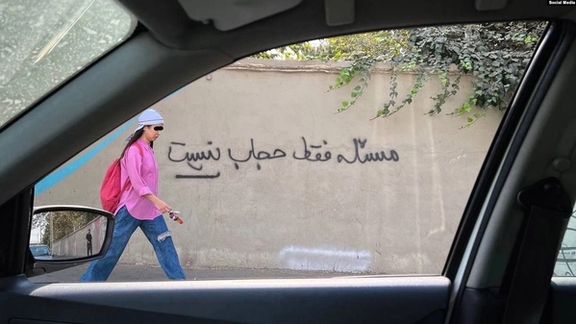
Echoing remarks by the Supreme Leader and other officials, he blamed the UK, US, Israel and Saudi Arabia for the current wave of protests across Iran – ignited by the death in custody of a 22-year-old Kurdish woman, Mahsa Amini.
He claimed that a “hybrid war” has been launched against the Islamic Republic, including an “influence operation” to destabilize the country, adding that the role of Israel was more obvious in field operations while UK’s role was more in terms of propaganda. He added that Saudi Arabia provided financial support for the operations against the Islamic Republic, especially for protests abroad, such as a huge demonstration in Berlin last month. The huge rally of diaspora Iranians in the German capital in October angered the government in Tehran which tried to belittle the opposition gathering.
“Unfortunately, the British government, which supports the BBC and Iran International satellite channels that operate within its media framework, has taken on a terrorist role today,” he said, calling it “crossing the security red lines of the Islamic Republic.”
His remarks came after the threat was discussed during a Tuesday meeting of the British House of Commons on whether to designate Iran’s Revolutionary Guard as a terrorist organization.
"British-Iranian reporters who are now sited in the UK have been issued with credible information by the police that the Islamic Revolutionary Guard Corps threatens their lives. What more does IRGC have to do before we proscribe them in their entirety?" Conservative British MP Bob Blackman said at the meeting.

Later on Tuesday, the Committee to Protect Journalists asked British authorities to strengthen their protection of threatened staff members of Iran International, demanding that they hold the Islamic Republic accountable for its transnational crimes.
“Time and again Iranian authorities have acted with impunity in attempting to silence journalists around the world,” said Sherif Mansour, CPJ’s Middle East and North Africa program coordinator.
“UK authorities must ensure the safety of Iran International’s staff and send a message that threats to journalists on its soil will not be tolerated. Until foreign governments hold Iran accountable, this trend will only worsen, and journalists will continue to face unacceptable threats to their safety.”